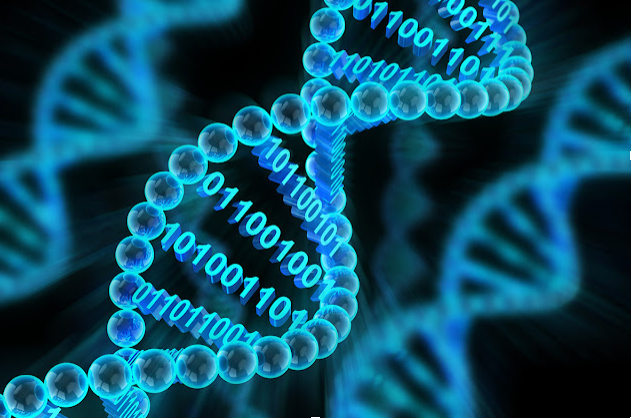Instabilities in DNA, the so-called "molecule of life," which contains the instructions for cellular operations in all living things, are caused by quantum effects, which had previously been unanticipated. This finding, which is supported by studies from the University of Surrey in the UK, defies long-held assumptions that quantum behaviour is irrelevant in the warm, moist environment of cells and could have significant ramifications for models of genetic mutation.
The four bases that make up each strand of DNA—guanine (G), cytosine (C), adenine (A), and thymine (T)—form bonds with hydrogen atoms (protons) that hold the two strands together. A typically bonds to T while C typically bonds to G. The incorrect bases, which can result in stable genetic abnormalities or even cancer, can join up if the bonding surface between the strands' shapes slightly changes. This is known as a tautomeric form of DNA.
When James Watson and Francis Crick used the research of Rosalind Franklin and Maurice Wilkins to discover the helical structure of DNA, they made the prediction that this effect would occur. But it wasn't until recently that the process of changing DNA bonds was precisely calculated and its quantum component understood.
The ability of the protons to transfer along the hydrogen bonds that form between the G-C bases, as demonstrated by Louie Slocombe, Marco Sacchi, Jim Al-Khalili, and colleagues, is what causes DNA bond modification. A mismatch develops when one of the protons hops from one side of the DNA strand to the other immediately before the DNA strand cleaves, or "unzips," as part of the process it goes through to copy itself.
Using an open quantum systems approach, the researchers were able to determine what causes protons to bounce along DNA strands. They found that the protons are actually quantum tunnelling through the threads rather than hopping along them. Additionally, they discovered that because of the rapid tunnelling rate, the system quickly approaches thermal equilibrium, ensuring that the population of tautomers is stable across biological periods.
It was previously believed that any such quantum behaviour would quickly disappear in the noisy environments found inside cells and would therefore not have any medical significance. However, Slocombe argues that quantum effects are important because the DNA system is so susceptible to the configuration of hydrogen bonds. In fact, even a minor change in the arrangement of a few hydrogen atoms can have an impact on how DNA replicates on a macroscopic level.
According to Slocombe, the subject is fascinating to research since it combines methods and concepts from other scientific fields. "Normally, these are not congruent, but we need them to be in order to effectively simulate the system. To simulate the systems, we need to have a solid understanding of chemistry and physics as well as biology, namely how DNA replicates and the consequences of mismatched DNA.
The researchers expect that their study "is the first of many" on this subject and publish their findings in Nature Communications. What happens at the precise moment of the DNA cleaving and how this interaction's timing interacts with the quick timescale of the hydrogen transfer are what most fascinates us, Slocombe continues.
The use of ATGC bases rather than other DNA forms, which are more unstable, raises the question of whether doing so has any evolutionary advantages. Another is whether or whether this instability results in mutation, which powers evolution. Slocombe says, "It would be intriguing to know if there are some DNA repair mechanisms that are specifically made to catch these types of defects.
Reference: Nature Communications





0 Comments